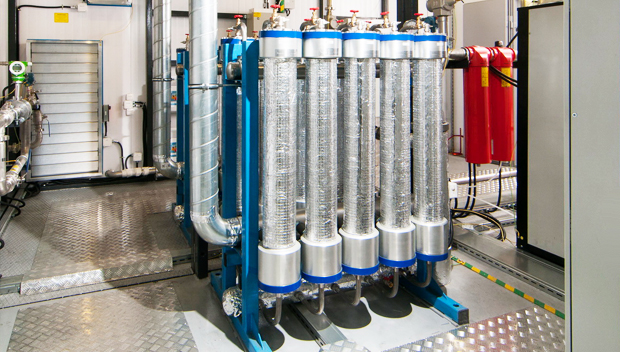Supply chains wobble, CO₂ prices swing, and dissolved oxygen targets keep getting stricter. That’s why many breweries and beverage plants are turning to onsite nitrogen generation. It gives them control, over gas quality, cost, and consistency, while unlocking cleaner flavor profiles and better shelf stability. Whether they’re producing crisp lagers, nitro stouts, hop-forward RTDs, or non-alcoholic seltzers, nitrogen is becoming a quiet cornerstone of modern cellar and packaging operations. This article unpacks how onsite nitrogen supports carbonation, stability, packaging precision, oxygen management, energy efficiency, safety compliance, and bottom-line savings. Brands like PneuTech now tailor Nitrogen For Breweries solutions that scale from taprooms to multi-line production sites.
How nitrogen enhances carbonation and product stability in breweries
Nitrogen doesn’t replace carbonation in most beers, but it changes the experience and protects quality. In nitrogenated styles, think stout on nitro, nitrogen’s low solubility creates those tight, cascading bubbles and a creamy mouthfeel that micro-foam lovers recognize instantly. Even in carbonated beers, strategic nitrogen use in tanks and lines supports stability without altering the intended CO₂ profile.
Here’s where it matters most:
- Tank blanketing: A nitrogen blanket over bright beer or finished beverage protects against oxygen ingress, keeping dissolved oxygen (DO) in check and flavor fresher for longer. Breweries routinely see lower pickup when swapping air or CO₂ headspace for nitrogen.
- Transfers and push gas: Using nitrogen to push from fermenters to brite tanks, and throughout filtration, reduces the risk of oxygen pickup compared to air exposure and can conserve CO₂ for actual carbonation.
- Foam and texture control: For nitro beers, dialing in nitrogen alongside CO₂ balance (often ~70–75% N₂ in the mix) creates the signature texture while maintaining stable head retention on tap and in widget cans.
With onsite nitrogen generation, brewers can match purity (e.g., 98–99.9% N₂) to the job. That control makes it easier to hit consistency targets day after day, even as production schedules flex.
Replacing CO₂ with nitrogen for smoother, longer-lasting beverages
CO₂ is essential for carbonation. But it’s often overused as a utility gas, wasted in purging, pushing product, and headspace management. Replacing those tasks with nitrogen preserves CO₂ for flavor and fizz while delivering smoother handling and better shelf life.
Why swap CO₂ for N₂ where it makes sense:
- Smoother sensory outcomes: Nitrogen doesn’t acidify liquids like CO₂ can, so using N₂ for line clearing, purging, or headspace can prevent subtle taste shifts, especially in delicate seltzers, NA beer, and flavored beverages.
- Less variability: CO₂ shortages and price spikes have been a real headache. Onsite nitrogen generation stabilizes utility gas availability with predictable costs.
- Longer-lasting product: Lower oxygen exposure during cellaring and packaging helps protect hop aroma, fruit notes, and overall freshness. Producers routinely report tighter Total Package Oxygen (TPO) when nitrogen replaces CO₂ in non-carbonation roles.
In practice, breweries commonly reserve CO₂ for carbonation and use nitrogen for purging vessels, pushing product between tanks, pressurizing bright tanks, and inerting can or bottle headspace. It’s a simple change with outsized impact on both quality and cost.
Improving kegging, bottling, and canning processes with gas control
Packaging is where nitrogen control pays off almost immediately. Consistent pressure and purity drive consistent fills and lower oxygen pickup.
Key wins across lines:
- Kegging: Nitrogen purge cycles clear atmospheric air out of kegs more efficiently than CO₂ in many setups. With a reliable N₂ supply, teams can standardize purge volumes and pressures, reducing waste and rework while protecting flavor stability.
- Bottling: Pre-evac and nitrogen purge of bottles slash oxygen in the headspace. A secondary N₂ “snift” (or cap-on-foam for some beers) further displaces oxygen right before capping.
- Canning: Nitrogen is widely used for tunnel and inline inerting, lid jetting, and headspace flushing. For still beverages or low-CO₂ SKUs, a controlled drop of liquid nitrogen creates internal pressure for better seam integrity without over-carbonation.
Instrumentation matters. Inline oxygen analyzers, pressure regulators, and mass flow control help operators tune nitrogen by SKU. Teams that move to onsite nitrogen typically report faster changeovers and more repeatable fills, because the gas is always on spec and on tap.
Reducing oxygen exposure during packaging and transfer lines
Oxygen is the quiet spoiler, especially for hop-forward beers, fruit RTDs, and NA beverages. Onsite nitrogen is one of the cleanest ways to push oxygen out of the picture.
Best practices that work:
- Vessel inerting: Purge bright tanks, filter housings, hoses, and manifolds with nitrogen before product ever touches them. Many breweries aim for DO in the brite tank in the low tens of ppb: nitrogen blanketing helps them get there consistently.
- Line clearing: Use nitrogen to push sanitizers and rinse water out of lines, then maintain a low N₂ sweep until product arrives to avoid air ingress.
- Headspace management: Nitrogen jetting immediately before crowning or seaming reduces total package oxygen. For still beverages, liquid nitrogen dosing sets internal pressure and keeps oxygen at bay without adding CO₂.
Measuring is non-negotiable. Tracking DO at the outlet of filtration and TPO at the filler provides immediate feedback. When nitrogen is generated onsite, purity can be matched to the sensitivity of each product, allowing operators to keep oxygen low without over-spending on ultra-high purity where it isn’t needed.
Energy-saving strategies for brewery nitrogen systems
Onsite nitrogen generation is already cost-efficient, but energy discipline separates good systems from great ones.
Practical ways to cut kWh per standard cubic foot:
- Right-size purity: Many packaging tasks perform perfectly at 98–99.5% N₂. Running 99.9% when it isn’t required increases compressor load. Map purity to the use case.
- Variable-speed air compressors: VSD compressors match airflow to demand, reducing idle and unload losses, especially helpful for breweries with spiky, batch-driven usage.
- Buffer storage and sequencing: A nitrogen receiver tank smooths peaks. Smart controls prioritize the generator, then draw from storage during short bursts at the filler.
- Leak audits: Hiss equals dollars. Regular ultrasonic leak checks in manifolds, quick-connects, and drop lines can reclaim 10–30% of wasted gas and compressor energy.
- Heat recovery: The compressor room is a free heat source. Ducting or heat exchangers can offset water or space heating, improving overall plant efficiency.
Providers like PneuTech design Nitrogen For Breweries packages with integrated filtration, dew point control, and VSD options, so plants hit purity and flow targets without bleeding energy.
Meeting beverage safety and purity standards in daily production
Nitrogen used in beverages must be clean, dry, and food-grade. Onsite systems can and should meet the same standards as delivered gas, consistently.
Core considerations:
- Compressed air quality: Pre-treatment should meet ISO 8573-1 classes appropriate for food contact. That typically means coalescing filtration, activated carbon for oil vapor, and a dryer to achieve a low pressure dew point.
- Final filtration: A 0.2 μm sterile filter at the point of use helps prevent microbial ingress to the nitrogen stream before it hits tanks, kegs, or fillers.
- Materials and validation: Food-safe piping, documented maintenance, and routine filter changes support HACCP plans and audit readiness. Many breweries follow ISBT guidance for gases and maintain certificates of analysis or continuous monitoring logs.
- Monitoring: Inline purity analyzers verify nitrogen percentage: data logging provides traceability. Purity alarms add a layer of protection during critical packaging windows.
Whether a plant uses oil-free or lubricated compressors, the right filtration and monitoring regime can deliver food-grade nitrogen day in, day out. Reputable partners will commission to spec and provide validation documents aligned to beverage QA requirements.




